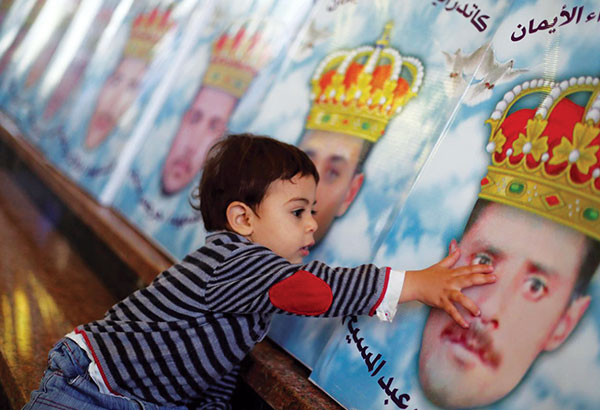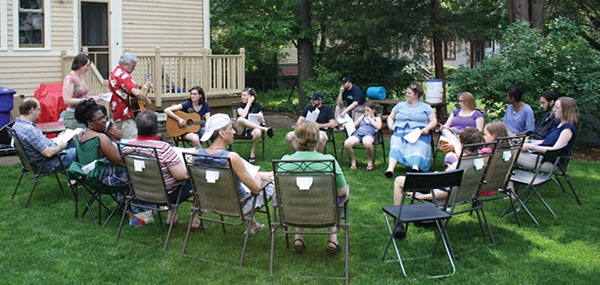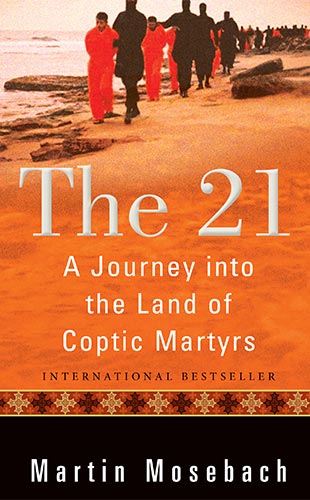Subtotal: $
Checkout-

Verena Arnold
-

Tundra Swans
-

A Debt to Education
-

What’s the Good of a School?
-

A School of One
-

On Praying for Your Children
-

The World Is Your Classroom
-

The Good Reader
-

Orchestras of Change
-

The Habit of Lack Is Hell to Break
-

Soviet Kindergarten
-

The Given Note
-

Editors’ Picks Issue 19
-

Litanies of Reclamation
-

The Children of Pyongyang
-

How Far Does Forgiveness Reach?
-

A Trio of Lenten Readers
-

Michael and Margaretha Sattler
-

The Blessed Woman of Nazareth
-

New Heaven, New War
-

Born to Us
-

My Fearless Future
-

Covering the Cover: School for Life
-

The Community of Education
-

Readers Respond: Issue 19

Next Article:
Explore Other Articles:
The Twenty-One Coptic Christians
In a carefully choreographed propaganda video released in February 2015, ISIS militants behead twenty-one orange-clad Christian men on a Libyan beach. As the video records, in their final moments the men were praying to Jesus – just like the early Christians did centuries ago when dying at the hands of Roman persecutors. It’s the recency of their voluntary death that unsettles the modern mind. What’s well accepted as an edifying act of heroism in an ancient saint is shocking when it surfaces in a YouTube video.

The son of one of the twenty-one Coptic Christians killed by ISIS in 2015 touches the face of his father, Hany. The icons of the martyrs are in a church in El-Aour, Egypt. Photograph by Abdallah Dalsh / Reuters
Since 2015, the threat of ISIS has receded, and new headline atrocities have supplanted this grisly event in the public consciousness, at least in America and Europe. But not in the Egyptian homeland of Coptic Christianity from which all but one of the murdered came. While they lived, they were migrant workers from impoverished villages, just like millions of others around the world, with nothing to mark them out as special; several were fathers with wives and young children at home. Yet today the twenty-one are venerated by the Coptic Orthodox Church as saints, and miracles are ascribed to their intercession.
What makes a modern martyr? To find out, the German literary novelist Martin Mosebach traveled to the Egyptian village of El-Aour to meet their families and better understand the faith and culture that shaped such conviction. His book, The 21: A Journey into the Land of Coptic Martyrs, which was a bestseller in Germany when it appeared in spring 2018, will be published in English by Plough in February 2019.
In his book, the author described how he began his project:
There are so many historic martyrs we know so little about, other than a few inaccurate details about their death; the dry lists of the Martyrologium Romanum, the Catholic Church’s official register of saints, remained abstract until Christian art turned them into tangible, relatable images. Things are rather different with the Twenty-One: not only is there a video of their Passion, but this video has the selfsame intention and effect as a work of art, albeit a particularly vile one – it is at once both document and aesthetically staged, pathetic concoction.…
The Twenty-One could well have echoed the words of Paul the Apostle: “for we are made a spectacle unto the world, and to angels, and to men.” But before they became such a spectacle for God and the world, each led the unremarkable life of a poor farmer. So was there anything in their villages that might have foreshadowed all this? In February and March of 2017, two years after the massacre, I traveled to Upper Egypt, to the homes they had left when they set out for Libya in search of work.
To mark the fourth anniversary of the martyrdom, Mosebach and Coptic Archbishop Angaelos of London will be speaking in three cities in February 2019: in New York on February 11, at an evening with New Yorker journalist Eliza Griswold; in Washington, DC, on February 12, at a conference at the National Press Club with the Religious Freedom Institute; and in London on February 14, at an ecumenical commemoration at Westminster. Plough readers interested in attending these events can get in touch at info@plough.com.
Nehemiah House
Comfortably settled in suburbia, Patrick Murray had a thriving law practice when friends asked him and his wife, Debbie, to help pray for someone to join their inner-city youth ministry. After several months of persistent prayer, Debbie told him she believed they were the couple God was calling. He wasn’t eager to exchange their secure life for an uncertain future. But they were, after all, Christians. Selling their home in Westfield, Massachusetts, in 2002 the Murrays took up residence in the low-income, high-crime Six Corners neighborhood of Springfield. Inspired by the story of Nehemiah rebuilding Jerusalem’s walls, they called their community Nehemiah House. You might find them and others who have joined them praying across the street from drug dealers and prostitutes, transforming a trash-strewn lot into a garden, or gathered for a meal with asylum seekers. Their goal, they say, is to piece together the fragmented lives of those they encounter with Christ’s love.

Already a subscriber? Sign in
Try 3 months of unlimited access. Start your FREE TRIAL today. Cancel anytime.



































